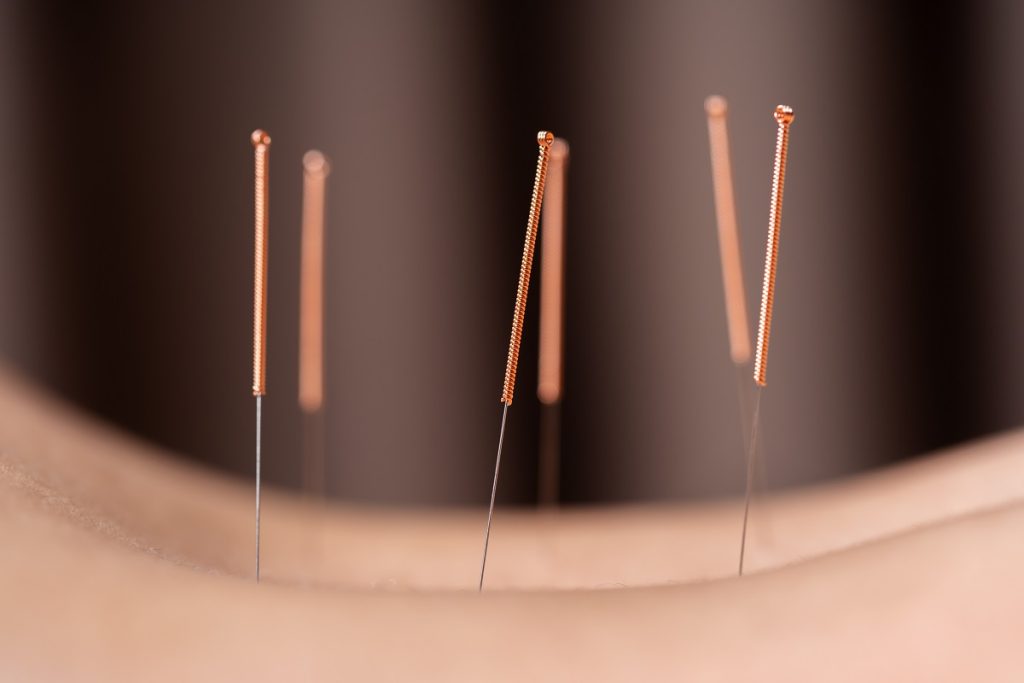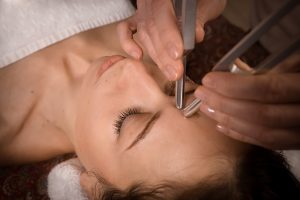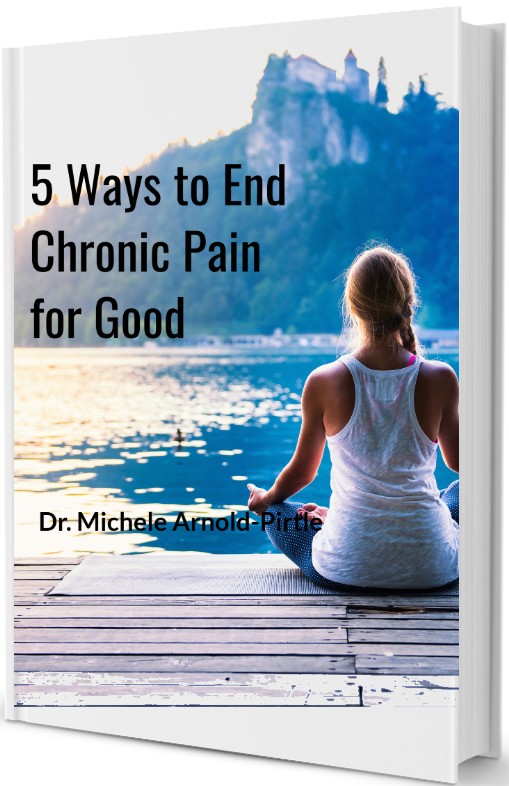Acupuncture Studies
How many acupuncture treatments will I need to get rid of my pain or health problems?
 Part 3 of How to Get the Best & Quickest Results out of your acupuncture treatments?
Part 3 of How to Get the Best & Quickest Results out of your acupuncture treatments?
“Acupuncture needling is the most powerful and direct method that releases tense, constricted muscles and fascia, improves blood flow, stops release of inflammatory chemicals, and relaxes the mind at the same time.”, Michele Arnold, D.A.C.M., L.Ac.
Acupuncture should be the first line of care to reduce pain because pain reduction is necessary to improve mobility and strength. It is a therapy that gives a cumulative effect to the body, and the best results are obtained by having a schedule of treatments.
Acupuncture enhances outcomes of other therapies like physical therapy, massage, and chiropractic.
So, how do you know how many acupuncture treatments will it take to get rid of your pain or health problems?
The efficacy of acupuncture is measured by the number treatments needed for maximum pain relief, and the duration of pain relief.
- It depends on the interaction between a patient’s self-healing potential,
- the severity and nature of the symptoms, or
- whether the symptoms or disease is healable. (1).
The number of treatments will vary from person to person. Some people experience immediate relief; others may take months or even years to achieve results. Chronic conditions usually take longer to resolve than acute ones. Plan on a minimum of a month to see significant changes.
*Following the right treatment plan along with keeping reasonable expectations of results will push you in the right direction of healing. This is so important that I can’t say enough about it!
Developing A Treatment Plan
Treatment frequency, heal ability of the disease, and self-healing potential depends on a variety of factors:
• Your constitution, strong or weak.
• Current physical health status and emotional stress related issues,
- Health problems, and emotional stress related issues over the past year.
• Past surgeries, injuries, and illnesses that may alter neuroanatomical structures.
• Medications, in particular aspirin, blood thinners, statins, steroids, opioids, and Gabapentin/Neurontin that block the body’s natural healing abilities.
• Age.
• How long you’ve had the problem and the severity.
• Weather the problem is a mechanical, structural, or chronic systemic nervous system dysfunction.
An acupuncturist may suggest 1-3 treatments per week, daily visits for several days, or monthly visits for health maintenance and seasonal “tune ups”.
- One course of Acupuncture Therapy per one condition generally can be between 10-15 treatments for chronic conditions that are moderate, or severe in nature.
- Newer milder cases may need 6-8 treatments. After a 1–3-week break, this could be followed by another course of therapy if necessary.
- For more comprehensive and lasting effects follow a Corrective Care plan to address underlying organ-meridian imbalances over the course of months or a year. The corrective care plan usually includes dietary, herbal, exercise, and meditation practices as well as the acupuncture therapy.
- This treatment plan table below works for the average person, not considering nature of specific disease, or the patient’s general health and self-healing potential.
- This is also assuming that both the practitioner and the patient have availability to meet the timeframe. If not, try and get as close as possible so that the appointments are not spread too far apart. Otherwise, you are prolonging resolution of the problem. This treatment plan table works well.
- 1st Month 3-5x per week for chronic/severe
- 1st Month 2-3x per week for moderate problem
- 1st Month 1-2x per week for mild problem
- 2nd Month 2-3x per week for chronic/severe problem
- 2nd Month 1-2x per week for moderate problem
- 2nd Month 1x per week for mild problem
Or within a given total quantity needed per condition.
Mild 3-6 Tx; Moderate 6-12; Severe, long-standing 10+
Measuring Progress with reasonable expectations
- Consider problem resolved if No pain or symptoms return for at least 14 days.
- Considering whether or not there is something you are doing or not doing that is getting in the way of healing.
- Chronic problems, and those with nervous system dysfunction the symptoms may return,
- Then another course visits will be needed to keep the pain under control for another 4 to 6 months.
- To understand why healthy management of daily life stressors, mental outlook, belief systems, and lifestyle contribute to health or disease see Part 1-“What is the Real Source of My Pain or Disease?”
- Healing is a process, and different tissues have different healing timelines. This is very important to understand so that you can have the right expectations, and not become too impatient when you think your body isn’t healing quick enough. This will be explained in an upcoming blog post, “How Do I Know Whether the Acupuncture Treatments are Helping Me or Not?”
Why Frequent Acupuncture?
With a treatment plan at twice weekly for 3-5 weeks versus once per week or every other week, the resolution of the disorder is accomplished in 10-20 days, rather than 10-15 weeks or months.
Subhuti Dharmananda, Ph.D., Director, Institute for Traditional Medicine, Portland, Oregon, writes in his article, “Restructuring American Acupuncture Practices”, “The ideal frequency for acupuncture therapy depends on one’s concept of the function of acupuncture therapy (1).” I have loosely paraphrased his ideas with a few of my own modifications.
This is assuming both patients and practitioners have the availability for scheduling appointments. Both parties need to be available to commit to the benefits of optimal care.
If you were to begin a new exercise regime you would do it at a minimum of three times weekly.
If you were to begin any other therapy like physical therapy, or chiropractic, you would follow a treatment plan very similar to acupuncture.
In all cases, it doesn’t work if you don’t do it just as medicine won’t work if you don’t take it.
Consider a few examples of other therapies. Would it be recommended that a patient:
- Take nutritional supplements (such as a vitamin/mineral) once per week or once per day?
- Take a course of antibiotics, one dose per week for ten weeks or one dose per day for ten days?
- Take a decongestant once per week during allergy season, or every day during allergy season?
- Exercise, 20-30 minutes once per week, or 20-30 minutes at least three to five days per week?
- Take an herbal tea or other herb preparation once per week, or every day?
- Sleep well once per week, or every night?
- Eat a healthy diet once per week or every day (or most days)?
Once per week doesn’t cut it for any of these things. Diet, exercise, sleep, herbs, vitamins, and common drug therapies are more like acupuncture treatments in their regulatory and recuperative effects, and a person should be doing them daily or almost every day. (1).
Now that you understand some general guidelines around acupuncture care, consider whether your pain is acute or chronic, and its severity.
Together we can come up with a treatment plan to help give you the best possible results in the shortest amount of time.
Give us a call today at (858) 613-0702 or Text preferred (858) 613-0793 to set up your appointments.
Best in Health,
Dr. Michele Arnold
REFERENCES
- Ma, Yun-tao; Cho, Zang Hee. Biomedical Acupuncture for Pain Management – E-Book. 2005. Elsevier Health Sciences. Kindle Edition.
- Dharmananda, Subhuti, “Restructuring American Acupuncture Practices”, May 2003. http://www.itmonline.org/arts/restructure.htm
- Duhigg, Charles. The Power of Habit: Why we do what we do in life and business. Random House. 2012. NY.
- Hanscom, David. Do You Really Need Spine Surgery? Take Control with a Surgeon’s Advice. 2019. Vertus Press: Oakland, CA.
- Bernard, Rick. Orthopedic Electroacupuncture. eBook edition.
- Wong, Joseph Y. A Manual of Neuro-Anatomical Acupuncture, Vol I: Musculo-Skeletal Disorders. 1999. The Toronto Pain and Stress Clinic, Inc. Toronto, Ontario, Canada.
Three Naturally Probiotic Foods that You May Not Know About
Three Probiotic Foods
Eating or drinking probiotic food as soon as possible after having diarrhea can help prevent future cases of diarrhea by introducing healthy bacteria back into the digestive system. It can also help prevent adverse reactions to antibiotics should you need to take them.
Probiotics will help with IBD, IBS, GERD, leaky gut, and other digestive disorders.
The root cause of many digestive problems is a lack of healthy gut bacteria, enzymes, or stomach acid.
The initial cause could be antibiotic use, poor diet, infection from a virus, bacteria, fungi, yeast, or candida. If you are beginning the intake of probiotics or probiotic foods begin slowly. You may feel adverse healing reactions from the die-off of bacteria, virus, yeast, and fungi, and other toxins released into your blood stream. These toxins must be expelled via sweat, breathing, urine, or the stool.
That is why rice congees, and green veggie smoothies are so helpful. They help promote toxin release as well as probiotic growth.
There are five foods you may not know about that are naturally probiotic. You may want to integrate them into your diet.
- Kefir. This is a milk-based food. However, like real butter, it does not have lactose. Studies indicate that it even helps people improve their digestion of lactose because kefir contains at least 3 times more live bacteria than yogurt. It is the bacteria, and digestive enzymes that help your body break down lactose sugars. Everyone reacts differently to kefir, so play around with your serving amounts to see what works for you. Begin slowly with 5-10 oz. Slowly increasing daily amount to include 1-2 8 oz. servings. Of course, if you have a milk allergy you would avoid drinking kefir and all milk products.
- Parmesan cheese. Yes, I said that right! Hard-aged cheeses are naturally rich in healthy gut bacteria. So sprinkle some on your food, and enjoy.
- Sauerkraut. Eat only the raw, organic kind. You can make your own, or purchase from your local health foods store. I believe Trader Joe’s, and Costco have good quality sauerkraut. It should be crunchy, and fresh tasting. You should drink the juice as well. Don’t let any of it go to waste. Like kefir, begin slowly with small amounts until your body gets used to digesting it. If you don’t eat a particular type of food group, you won’t have the enzymes necessary to break it down. That is why traveling, and eating new foods can sometimes cause stomach upset. Sauerkraut makes a great appetizer, or side-dish.
Here is one recipe you can try. If you do, please tell me what you think?
Probiotic Raspberry Drink
- 1 Cups plain kefir or sauerkraut juice
- 1 mangos, skin and pit removed
- 1/2 Cup fresh or frozen raspberries
- 1.5 Cups kale, stems removed and chopped roughly
- Add all ingredients to a blender, blend until smooth about 2 minutes.
- Drink and enjoy!
This post is an excerpt from Dr. Michele Arnold-Pirtle’s book, It’s All About Your Gut!
Buy your copy from www.lulu.com/shop enter in the title and purchase.
I appreciate comments, questions, and testimonials! Please like and share this post.
Dr. Michele Arnold, Doctor of Acupuncture Medicine.
Acupuncture reduces frequency and severity of migraine headaches

Do you suffer from migraine headaches? Did you know that acupuncture can help?
Yes, that’s right! Researchers conclude that acupuncture can help reduce severity and frequency of migraine headaches.
The usual care involves pharmaceuticals, and these have unwanted side-effects. Acupuncture on the other hand stimulates your own body to heal itself without side-effects.
Functional magnetic resonance imaging (fMRI) studies provide data supporting a direct link between acupuncture points and specific brain activity.
Currently, acupuncture is considered to be a safe, helpful, and available alternative option for patients.
You can read the research review, “Acupuncture and Its Role in the Treatment of Migraine Headaches“, by Urits, I., Patel, M., et. Al, October 10, 2020. One study they say, “The authors concluded that acupuncture is more effective than no treatment, sham treatment, or medication in treating and preventing migraines and that it is also associated with a greater enhancement in quality of life compared to medication.”
Interestingly, they cite a comparison between acupuncture and Botox injections. “A 2017 RCT compared the efficacy of botulinum toxin-A, another treatment modality approved for the treatment of migraines, with acupuncture and sodium valproate (as a control) in treating chronic migraines. The authors found that the visual analog scale (VAS) score was significantly reduced from baseline to 3-months post-treatment in all of the groups studied (p = 0.0001). Of the three groups, the acupuncture group reported the greatest reduction in pain severity at the end of the 3-month study (p = 0.0001). Additionally, the trial showed that the number of days per month with migraine, absence from work, and the need for medication significantly decreased from pre-treatment to post-treatment at all of the time intervals in all of the three groups. Furthermore, the acupuncture group experienced fewer side effects than the group that received botulinum toxin-A (p = 0.021). The authors therefore concluded that while botulinum toxin-A, acupuncture, and pharmacological methods demonstrate some efficacy in treating chronic migraines, acupuncture demonstrates more effectiveness and is associated with fewer adverse events”.
In my practice I have often found the root cause to be from the jaw, the neck, hormonal, or emotional. Addressing the root causative factors along with the migraine can greatly enhance results. Sticking with the treatment plan makes a difference as well. If you read studies about acupuncture and successful treatment of migraines it generally takes 16-24 weeks of care. For many this is a short amount of time considering a life-time of suffering.
Schedule your appointment to begin your life free from migraine headaches.
Urits, I., Patel, M., Putz, M.E. et al. Acupuncture and Its Role in the Treatment of Migraine Headaches. Neurol Ther 9, 375–394 (2020). https://doi.org/10.1007/s40120-020-00216-1
shoulder pain relieved by acupuncture
Shoulder pain and acupuncture Blog Banner by Michele Arnold
“Acupuncture relieves shoulder pain, inflammation, and range of motion impingement. Researchers from the Yuxi Hospital of TCM (Traditional Chinese Medicine) investigated the efficacy of acupuncture for the treatment of acute shoulder periarthritis. Commonly known as frozen shoulder or adhesive capsulitis, this condition is an inflammatory disorder of the rotator cuff and surrounding tissues that leads to pain and immobility of the shoulder. The investigation reveals that acupuncture has a total effective rate exceeding 90%.”
It is of no surprise to me to read about positive findings in studies of acupuncture and shoulder pain. The following was posted from Health CMI, where I frequently receive some news and updates.



